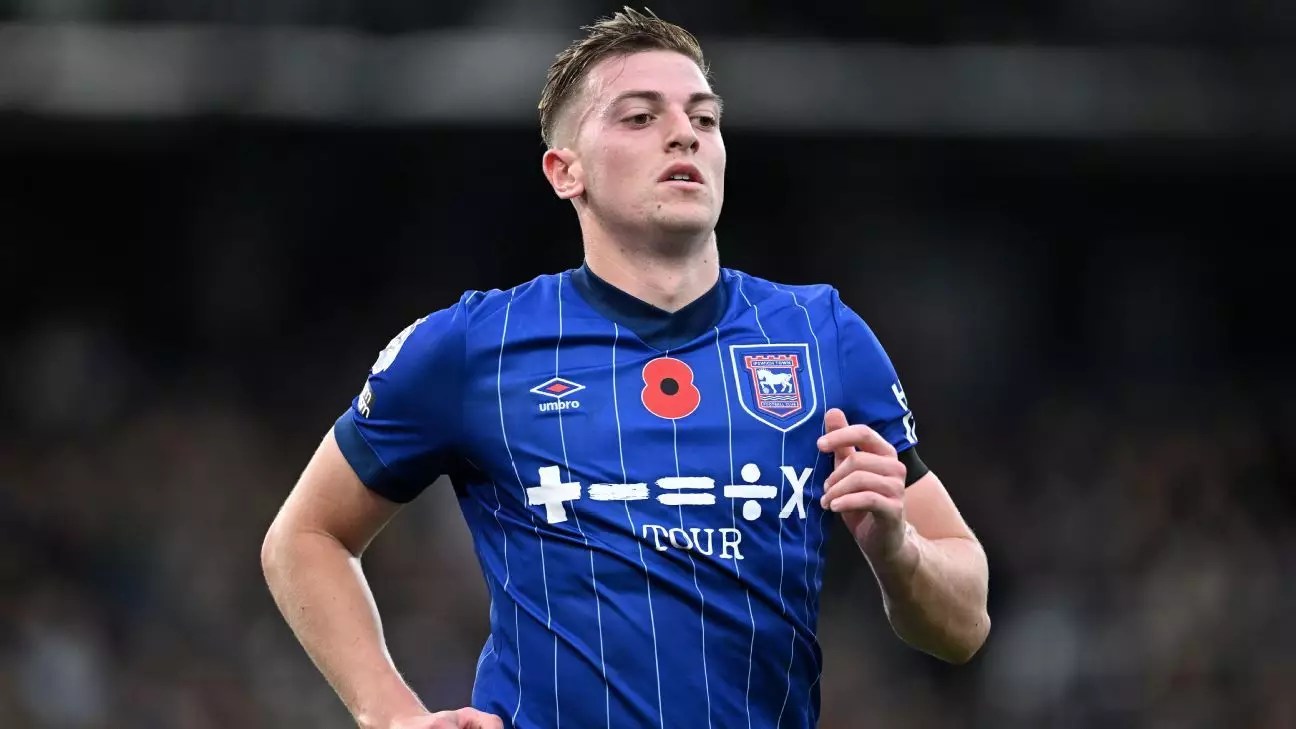The world of football is a dynamic playground, particularly when it comes to player transfers. Teams are perpetually on the lookout for fresh talent, and this season is no exception. With clubs like Chelsea and Manchester United keeping an eye on emerging stars, while giants like Real Madrid and Bayern Munich are poised to strengthen their arsenals, the intrigue of transfer rumors unfolds like a gripping soap opera.
Liam Delap, the promising 21-year-old striker, has emerged as a hot property in the transfer market. His impressive form at Ipswich Town has ignited interest from Chelsea and Manchester United, two clubs desperate to bolster their attacking options. However, this pursuit may be complicated by Manchester City, his parent club, which holds a re-signing clause that could thwart any potential moves to either of the other two clubs. This situation encapsulates the broader dilemma many clubs face: the challenge of nurturing talent while also contending with the financial and operational realities of a competitive market. It raises questions about how clubs manage their youth talent, especially when larger clubs can potentially bypass established talent through pre-existing agreements.
Meanwhile, another young star on the radar is Florian Wirtz, who finds himself at the center of intrigue between Real Madrid and Bayern Munich. Reports suggest that Wirtz’s decision is closely tied to whether Xabi Alonso remains at Real Madrid, hinting at how managerial stability can heavily influence a player’s career trajectory. Wirtz, only 21, has the potential to be a transformative figure for whichever side he chooses. The prospect of leaving Bayer Leverkusen for either of these European powerhouses is laden with opportunity, but it is equally fraught with the risks inherent in joining high-pressure environments.
Bayern Munich’s plans to offload seasoned players like Leon Goretzka, Serge Gnabry, or Leroy Sané to accommodate Wirtz further illustrates the cutthroat nature of the transfer market—where established stars may need to make way for burgeoning talent. It raises the question of how clubs balance their current squad’s experience with the drive for rejuvenation and progress.
The potential transfer of Randal Kolo Muani from Paris Saint-Germain (PSG) to RB Leipzig represents yet another intriguing facet of the current transfer landscape. With RB Leipzig interested in the striker but facing a challenging negotiation climate, it brings to light the complexities clubs navigate when acquiring talent. PSG’s willingness to retain Kolo Muani unless a significant offer arrives could act as a deterrent, particularly when considering the inflated market value for key players. This is symptomatic of a wider trend—where financial considerations often dictate the terms of negotiations, challenging smaller clubs that aspire to compete with big spenders.
As clubs seek to strengthen their midfield, Nicolò Fagioli’s potential move from Juventus to Marseille speaks volumes about the shifting priorities within major leagues. The 23-year-old has piqued the interest of not just Marseille but also Napoli, PSG, and several English clubs, underscoring how players are becoming coveted assets within a global framework. The reported asking price of €25 million to €30 million for Fagioli further highlights the escalating costs associated with acquiring promising young talent in the current market.
Marseille’s efforts to reinforce their defense by targeting players like Freiburg’s Kiliann Sildillia and Juventus’ Danilo further exemplify a strategic approach that prioritizes both immediate and long-term club needs. With defensive vulnerabilities apparent in their current squad, the ability to secure reliable defenders is crucial for Marseille’s aspirations in Ligue 1.
Finally, Aston Villa’s interest in Werder Bremen’s attacking midfielder Romano Schmid signals their intent to reclaim a position within the top four. This desire speaks to broader trends in the Premier League, where clubs outside the traditional elite are vying for European competition slots. However, the reluctance of Werder Bremen to facilitate a winter transfer points to a growing trend where clubs are cautious about relinquishing key players mid-season.
Overall, the current transfer market reflects the interplay between ambition, strategy, and financial realities. Clubs are navigating an increasingly complicated web of interests as they aim not only to sign the best talent but also to safeguard their existing assets in a world where football’s financial stakes continue to rise dramatically. As the window approaches, all eyes will be on how these narratives unfold, shaping teams for seasons to come.


Leave a Reply